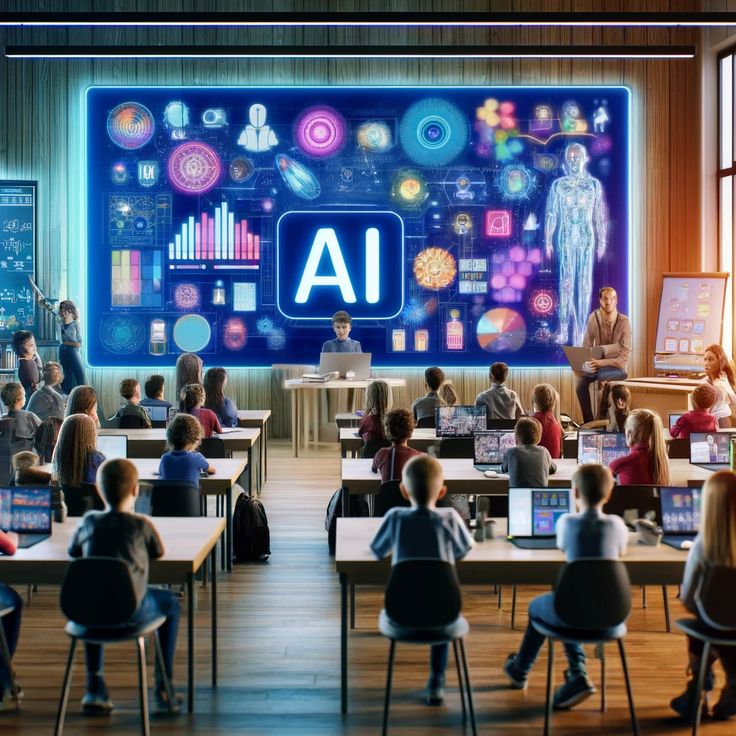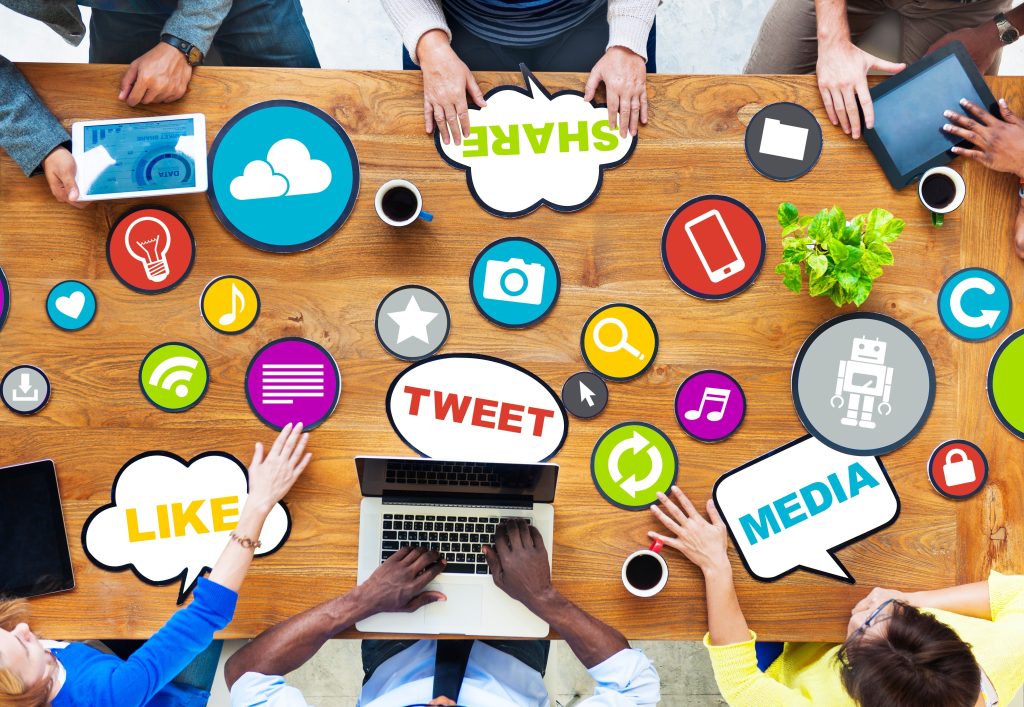A Step-by-Step Plan for Creating an Online Platform in 2025
Table of Contents
- Introduction
- Step 1: Define Your Platform’s Purpose and Target Audience
- Step 2: Market Research and Competitor Analysis
- Step 3: Develop Your Platform Strategy
- Step 4: Plan Your Platform’s Features and Functionality
- Step 5: Choose the Right Technology Stack
- Step 6: Design the User Interface and User Experience
- Step 7: Develop the Platform
- Step 8: Implement Security Measures
- Step 9: Test and Quality Assurance
- Step 10: Launch and Marketing
- Step 11: Post-Launch Maintenance and Updates
- Step 12: Analyze and Iterate
- Conclusion
Introduction
In the rapidly evolving digital landscape of 2025, creating a successful online platform requires a strategic approach that incorporates the latest technological advancements and user expectations. This comprehensive guide will walk you through the essential steps to build a robust, user-centric online platform that stands out in a competitive market.
As we embark on this journey, it’s crucial to understand that the world of web development and online platforms has undergone significant transformations. Artificial Intelligence (AI) and Machine Learning (ML) have become integral components of modern web applications, enhancing user experiences and automating processes. The rise of Progressive Web Apps (PWAs), voice search optimization, and other cutting-edge technologies has reshaped how users interact with online platforms.
This guide will help you navigate these trends and create a platform that not only meets current standards but is also future-proof and adaptable to emerging technologies.
Step 1: Define Your Platform’s Purpose and Target Audience
Before diving into the technical aspects of platform development, it’s crucial to establish a clear vision for your online platform.
1.1 Identify Your Platform’s Core Purpose
- Define the primary goal of your platform. Is it to provide a service, sell products, facilitate connections, or share information?
- Outline the key problems your platform will solve for its users.
- Determine how your platform will add value to its users’ lives or businesses.
1.2 Define Your Target Audience
- Create detailed user personas representing your ideal users.
- Consider demographics, psychographics, and behavioral characteristics of your target audience.
- Understand the needs, preferences, and pain points of your potential users.
1.3 Establish Your Unique Value Proposition (UVP)
- Clearly articulate what sets your platform apart from existing solutions.
- Identify the unique benefits users will gain from your platform.
- Ensure your UVP aligns with your target audience’s needs and expectations.
Step 2: Market Research and Competitor Analysis
Thorough market research is essential to understand the landscape in which your platform will operate.
2.1 Analyze Market Trends
- Study current and emerging trends in your industry.
- Identify potential opportunities and challenges in the market.
- Assess the overall market size and growth potential.
2.2 Conduct Competitor Analysis
- Identify direct and indirect competitors.
- Analyze their strengths, weaknesses, and unique selling points.
- Evaluate their user experience, features, and pricing strategies.
- Look for gaps in the market that your platform can fill.
2.3 Gather User Insights
- Conduct surveys, interviews, or focus groups with potential users.
- Analyze user feedback on existing platforms in your niche.
- Identify unmet needs or pain points that your platform can address.
Step 3: Develop Your Platform Strategy
With a clear understanding of your purpose, audience, and market, it’s time to develop a comprehensive strategy for your platform.
3.1 Define Your Business Model
- Choose the most appropriate revenue model (e.g., subscription, freemium, advertising, transaction fees).
- Determine your pricing strategy if applicable.
- Plan for scalability and future monetization opportunities.
3.2 Outline Your Growth Strategy
- Set clear, measurable goals for user acquisition and retention.
- Develop strategies for user engagement and community building.
- Plan for potential partnerships or integrations that could enhance your platform’s value.
3.3 Create a Roadmap
- Outline the key milestones for your platform’s development and launch.
- Prioritize features and functionalities based on their importance and resource requirements.
- Plan for future updates and expansions.
Step 4: Plan Your Platform’s Features and Functionality
Now that you have a solid strategy in place, it’s time to define the specific features and functionalities that will bring your platform to life.
4.1 Core Features
- List the essential features that directly support your platform’s primary purpose.
- Prioritize features based on user needs and your unique value proposition.
- Consider how each feature contributes to solving user problems or enhancing their experience.
4.2 User Journey Mapping
- Create detailed user flows for key actions on your platform.
- Identify potential pain points in the user journey and plan solutions.
- Ensure a seamless and intuitive experience from user onboarding to advanced interactions.
4.3 Integration of AI and Machine Learning
In 2025, AI and ML have become integral to web development, enhancing user experiences and automating processes. Consider incorporating these technologies in your platform:
- Personalization: Use AI to tailor content, recommendations, or user interfaces based on individual preferences and behavior.
- Predictive Analytics: Implement ML algorithms to forecast user needs or market trends.
- Automated Support: Integrate AI-powered chatbots or virtual assistants to provide instant user support.
- Content Generation: Utilize AI for creating or curating content, if relevant to your platform.
4.4 Voice Search Optimization
With the growing popularity of voice-activated devices, optimizing your platform for voice search has become crucial.
- Implement natural language processing to understand and respond to voice queries.
- Optimize content for conversational keywords and phrases.
- Ensure your platform can provide concise, voice-friendly responses to common queries.
4.5 Progressive Web App (PWA) Capabilities
Consider developing your platform as a Progressive Web App to combine the best of web and mobile app experiences.
- Offline functionality: Allow users to access key features even without an internet connection.
- Push notifications: Engage users with timely, relevant notifications.
- Home screen installation: Enable users to add your platform to their device’s home screen for quick access.
4.6 Accessibility Features
Ensure your platform is accessible to users with diverse abilities:
- Implement keyboard navigation for all features.
- Provide alternative text for images and media.
- Ensure sufficient color contrast and text sizing options.
- Support screen readers and other assistive technologies.
Step 5: Choose the Right Technology Stack
Selecting the appropriate technologies for your platform is crucial for its performance, scalability, and maintainability.
5.1 Frontend Development
Choose frontend technologies that allow for responsive, dynamic, and performant user interfaces. Popular choices in 2025 include:
- React.js: Known for its component-based architecture and virtual DOM for efficient updates.
- Vue.js: Offers a gentle learning curve and excellent performance.
- Svelte: Gaining popularity for its simplicity and speed in building user interfaces.
Consider using a framework like Next.js or Nuxt.js for server-side rendering and improved SEO.
5.2 Backend Development
Select a backend technology that aligns with your platform’s requirements for performance, scalability, and ease of development. Options include:
- Node.js: Excellent for real-time applications and microservices architecture.
- Python with Django or Flask: Great for data-intensive applications and rapid development.
- Go: Known for its performance and efficiency, especially in cloud applications.
5.3 Database Selection
Choose a database system that suits your data structure and query requirements:
- PostgreSQL or MySQL for relational data with complex relationships.
- MongoDB or Cassandra for NoSQL solutions with high scalability.
- Redis for caching and real-time data storage.
5.4 API Architecture
Implement a robust API architecture to ensure smooth communication between your frontend and backend:
- RESTful APIs: Widely used and understood by developers.
- GraphQL: Offers more flexibility in data querying and can reduce over-fetching.
5.5 Cloud Services and Serverless Architecture
Leverage cloud services for scalability, reliability, and cost-effectiveness:
- Amazon Web Services (AWS), Google Cloud Platform (GCP), or Microsoft Azure for comprehensive cloud solutions.
- Serverless computing options like AWS Lambda or Google Cloud Functions for specific functionalities.
5.6 DevOps and Continuous Integration/Continuous Deployment (CI/CD)
Implement DevOps practices and CI/CD pipelines to streamline development and deployment:
- Use tools like Jenkins, GitLab CI, or GitHub Actions for automated testing and deployment.
- Implement containerization with Docker for consistent development and deployment environments.
Step 6: Design the User Interface and User Experience
A well-designed user interface (UI) and user experience (UX) are critical for the success of your online platform.
6.1 User-Centered Design Approach
- Conduct user research to understand preferences and behaviors.
- Create user personas and use cases to guide design decisions.
- Develop user journey maps to visualize the complete user experience.
6.2 Wireframing and Prototyping
- Create low-fidelity wireframes to outline the basic structure and layout.
- Develop interactive prototypes to test user flows and interactions.
- Iterate based on user feedback and usability testing results.
6.3 Visual Design
- Develop a cohesive visual language that aligns with your brand identity.
- Create a style guide including color schemes, typography, and UI components.
- Ensure consistency across all pages and features of your platform.
6.4 Responsive and Adaptive Design
- Implement responsive design principles to ensure your platform works well on all device sizes.
- Consider adaptive design techniques for optimal experiences on specific devices or screen sizes.
6.5 Accessibility in Design
- Choose color combinations that meet WCAG contrast requirements.
- Design form elements and interactive components with accessibility in mind.
- Provide clear visual feedback for all user interactions.
6.6 Performance-Oriented Design
- Optimize images and media for fast loading times.
- Implement lazy loading for content that’s not immediately visible.
- Design with performance in mind, considering the impact of complex animations or heavy graphics.
Step 7: Develop the Platform
With your technology stack chosen and design in place, it’s time to bring your platform to life through development.
7.1 Set Up Development Environment
- Configure version control using Git and platforms like GitHub or GitLab.
- Set up local development environments for all team members.
- Implement a code review process to maintain code quality.
7.2 Frontend Development
- Implement the UI design using your chosen frontend framework.
- Develop reusable components for consistency and efficiency.
- Optimize for performance, considering factors like code splitting and lazy loading.
7.3 Backend Development
- Develop APIs following RESTful or GraphQL principles.
- Implement business logic and data processing functionalities.
- Set up database schemas and optimize queries for performance.
7.4 Integration of AI and ML Features
- Implement AI-driven personalization using frameworks like TensorFlow.js or brain.js.
- Develop ML models for predictive analytics or recommendation systems.
- Integrate natural language processing for voice search and chatbot functionalities.
7.5 Progressive Web App Implementation
- Develop service workers for offline functionality and caching.
- Implement a web app manifest for home screen installation.
- Set up push notifications for user engagement.
7.6 Third-Party Integrations
- Integrate necessary third-party services (e.g., payment gateways, analytics tools, social media APIs).
- Ensure secure handling of API keys and sensitive information.
7.7 Content Management System (CMS) Integration
- If required, integrate a headless CMS for flexible content management.
- Implement content workflows and versioning systems.
Step 8: Implement Security Measures
In 2025, with increasing cyber threats and data privacy concerns, implementing robust security measures is more critical than ever.
8.1 Data Encryption
- Implement end-to-end encryption for sensitive user data.
- Use HTTPS protocol for all data transmissions.
- Encrypt data at rest in your databases.
8.2 Authentication and Authorization
- Implement multi-factor authentication (MFA) for user accounts.
- Use OAuth 2.0 or OpenID Connect for secure third-party authentications.
- Implement role-based access control (RBAC) for different user types.
8.3 API Security
- Implement API key authentication and rate limiting.
- Use JSON Web Tokens (JWT) for stateless authentication.
- Regularly audit and update API security measures.
8.4 Compliance with Data Protection Regulations
- Ensure compliance with relevant data protection laws (e.g., GDPR, CCPA).
- Implement user consent management systems.
- Provide transparent data usage policies and user controls for data management.
8.5 Regular Security Audits and Penetration Testing
- Conduct regular security audits of your platform.
- Perform penetration testing to identify potential vulnerabilities.
- Stay updated with the latest security patches and updates for all used technologies.
Step 9: Test and Quality Assurance
Thorough testing is crucial to ensure your platform functions correctly and provides a smooth user experience.
9.1 Unit Testing
- Write and run unit tests for individual components and functions.
- Aim for high test coverage across your codebase.
- Use testing frameworks appropriate for your technology stack (e.g., Jest for JavaScript, pytest for Python).
9.2 Integration Testing
- Test the interaction between different components and modules.
- Ensure all parts of your platform work together seamlessly.
9.3 User Acceptance Testing (UAT)
- Conduct UAT with a group of beta testers or potential users.
- Gather feedback on usability, features, and overall experience.
- Iterate based on user feedback.
9.4 Performance Testing
- Conduct load testing to ensure your platform can handle expected traffic.
- Perform stress testing to identify breaking points.
- Optimize based on performance test results.
9.5 Cross-Browser and Cross-Device Testing
- Test your platform across different browsers and versions.
- Ensure compatibility with various devices and screen sizes.
9.6 Accessibility Testing
- Conduct automated accessibility tests using tools like aXe or WAVE.
- Perform manual testing with screen readers and other assistive technologies.
- Ensure compliance with WCAG guidelines.
9.7 Security Testing
- Conduct vulnerability assessments and penetration testing.
- Test for common security issues like SQL injection, XSS, and CSRF.
Step 10: Launch and Marketing
With your platform developed and thoroughly tested, it’s time to prepare for launch and implement your marketing strategy.
10.1 Pre-Launch Preparations
- Finalize all content, including help documentation and FAQs.
- Set up analytics tools to track user behavior and platform performance.
- Prepare a launch plan with clear timelines and responsibilities.
10.2 Soft Launch
- Consider a soft launch to a limited audience for final real-world testing.
- Gather feedback and make necessary adjustments before the full launch.
10.3 Full Launch
- Execute your launch plan, ensuring all systems are go.
- Monitor closely for any issues or unexpected behavior.
- Be prepared to quickly address any problems that arise.
10.4 Marketing and Promotion
- Implement your digital marketing strategy, including SEO, content marketing, and social media campaigns.
- Leverage AI-driven marketing tools for personalized user acquisition and engagement strategies.
- Consider influencer partnerships or collaborations to expand your reach.
10.5 User Onboarding
- Implement a smooth onboarding process for new users.
- Provide tutorials, tooltips, or guided tours to help users understand your platform.
- Use AI-powered chatbots to assist users with common questions or issues.
10.6 Community Building
- Foster a community around your platform through forums, social media groups, or in-platform features.
- Encourage user-generated content and discussions.
- Regularly engage with your community to build loyalty and gather feedback.
Step 11: Post-Launch Maintenance and Updates
Launching your platform is just the beginning. Continuous maintenance and updates are crucial for long-term success.
11.1 Regular Maintenance
- Conduct routine checks and maintenance of your platform’s infrastructure.
- Monitor server health, database performance, and overall system stability.
- Regularly update dependencies and third-party integrations to ensure security and compatibility.
11.2 Performance Optimization
- Continuously monitor and optimize your platform’s performance.
- Use tools like Google PageSpeed Insights or Lighthouse to identify areas for improvement.
- Implement caching strategies and CDN solutions for faster content delivery.
11.3 Feature Updates and Improvements
- Regularly release new features and improvements based on user feedback and market trends.
- Implement A/B testing for new features to gauge user reception.
- Use AI-driven analytics to identify areas for improvement and predict user needs.
11.4 Security Updates
- Stay informed about the latest security threats and vulnerabilities.
- Promptly apply security patches and updates.
- Regularly review and update your security protocols.
11.5 Scalability Management
- Monitor your platform’s growth and scale resources as needed.
- Optimize database queries and implement caching for improved performance at scale.
- Consider implementing microservices architecture for better scalability and maintainability.
Step 12: Analyze and Iterate
Continuous analysis and iteration are key to ensuring your platform remains relevant and successful in the long term.
12.1 Data Analysis
- Utilize AI and machine learning for advanced data analysis and insights.
- Track key performance indicators (KPIs) relevant to your platform’s goals.
- Use tools like Google Analytics, Mixpanel, or custom analytics solutions for in-depth user behavior analysis.
12.2 User Feedback Collection
- Implement in-app feedback mechanisms for easy user input.
- Conduct regular user surveys and interviews.
- Monitor social media and review platforms for user sentiment.











